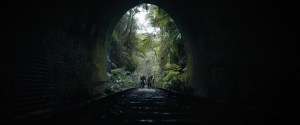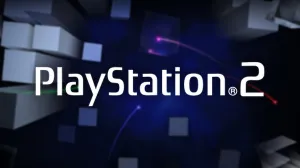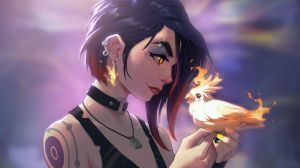The Marvel Cinematic Universe was built on the revolutionary promise of a single sprawling story told across interconnected films, an experiment that changed Hollywood and culminated in the unprecedented success of the Infinity Saga. However, when Marvel tried to expand that promise beyond the big screen, the results were often inconsistent. For years, its television efforts were treated as an afterthought, creating a fractured canon that the studio is still trying to mend. Then, when Marvel Studios refocused on television projects, the result was a bloated slate of releases that mostly failed in justifying the shared universe concept.
Videos by ComicBook.com
Meanwhile, for over a decade, Warner Bros. chased Marvel’s success with a series of questionable cinematic decisions that resulted in more misses than hits for its DC properties. For starters, the defunct DC Extended Universe was launched with a multi-film arc that was publicly abandoned midway through after critically panned and commercially disappointing films like Batman v Superman: Dawn of Justice and 2017’s Justice League. After that, the studio’s constant course corrections and reactive decision-making led to a disjointed slate of films. While there were isolated successes like Wonder Woman and Aquaman, the overall lack of a cohesive vision eroded audience trust and ultimately led to a total reboot. Now, under the new leadership of James Gunn and Peter Safran, the DC Universe is being rebuilt from the ground up.
The early trifecta of DCU projects serves as a powerful proof of concept for this new universe. The animated series Creature Commandos kicked off the story with strong critical praise, earning a 95% on Rotten Tomatoes. The blockbuster film Superman then established the heroic core of the universe, securing an 83% Certified Fresh rating from critics. Finally, the second season of the live-action series Peacemaker debuted to a near-perfect 97% on Rotten Tomatoes, with many critics calling it even better than the first season. Together, these three releases demonstrate the DCU’s ability to spread a single story across different media while maintaining both high quality and an interconnected narrative. This initial success suggests the DCU is building a world that could help it become the dominant force in superhero media.
Marvel Studios’ Fractured Universe

During the MCU’s early years, Marvel Studios, led by Kevin Feige, and Marvel Television, headed by Jeph Loeb, operated as separate entities under the broader Marvel Entertainment umbrella, which was controlled by Ike Perlmutter. A well-documented rift between Feige and Perlmutter led to a corporate restructuring in 2015 that moved Marvel Studios directly under Walt Disney Studios, while Marvel Television remained behind. This split created a practical and creative chasm, as the films had no incentive or obligation to acknowledge the television shows, resulting in a frustrating “one-way canon.”
This disconnect was painfully obvious to fans of shows like Agents of S.H.I.E.L.D. The series, which began as a direct tie-in to the movies, spent years reacting to the events of the films without any reciprocation. As an example, the show’s entire premise was forced to be altered by the events of Captain America: The Winter Soldier, yet the resurrection of Agent Phil Coulson (Clark Gregg), the emotional core of the first Avengers film, was completely ignored by the movie side of the MCU.

Similarly, the popular Netflix shows, including Daredevil and Jessica Jones, operated in a gray area, making vague references to “the incident” in New York but remaining fundamentally separate. For years, their canonicity was a subject of intense debate until Marvel Studios recently and retroactively integrated them into the official timeline, a move driven by the redevelopment of Daredevil: Born Again.
Once Marvel Television was folded into Marvel Studios in 2019, allowing Feige to oversee all productions, the problem of integration merely evolved. Many of the Disney+ series have been criticized for functioning as lengthy prologues for upcoming films rather than satisfying standalone stories. The plot of Doctor Strange in the Multiverse of Madness, for instance, is heavily dependent on Wanda Maximoff’s (Elizabeth Olsen) character development in WandaVision, leaving movie-only audiences confused. At the same time, other series, like Moon Knight, feel so isolated from the wider MCU that their place in the grand narrative is unclear.
On the animation front, the strategy has been one of intentional separation. Popular and acclaimed series like X-Men ’97 and Your Friendly Neighborhood Spider-Man are explicitly set outside the Sacred Timeline, while the multiversal stories of What If…? are designed to avoid any direct impact on the main plot. This persistent failure to properly stitch its various parts together means the MCU’s shared universe often feels more like a collection of separate properties than a single, cohesive story. At other moments, though, different productions are so deeply coupled that following every new Marvel Studios release feels like homework, something that even Feige has recognized.
The DCU’s Blueprint for a New Era

While still in its infancy, the DCU is already one step ahead of the MCU when it comes to its shared universe. The animated Creature Commandos introduced key players like Rick Flag Sr. (Frank Grillo), who then appeared in Superman before becoming the primary antagonist in Peacemaker Season 2, creating a clear and direct narrative throughline across all three opening projects. Likewise, Nathan Fillion’s Guy Gardner was introduced in Superman and is confirmed to return in both Peacemaker Season 2 and the upcoming live-action series Lanterns, solidifying his place in the universe. This deliberate character-sharing forges a universe that feels genuinely interconnected from the very beginning, with prominent faces being featured multiple times in a short period.
However, while each DCU project is explicitly set in the same universe, each story is crafted to be a satisfying standalone experience, ensuring that audiences are not required to consume every piece of content to understand the plot. A fan can enjoy Superman on its own merits without having seen Creature Commandos. Still, for those who choose to engage with the entire narrative, the experience is deeply rewarding. Furthermore, the DCU is also committed to tonal diversity, with the upcoming R-rated horror film Clayface and the animated Dynamic Duo promising vastly different experiences within the same unified canon.
This solves the two biggest issues the MCU has presented, especially in recent years. Following the DCU does not feel like homework, because each entry is a compelling story in its own right. At the same time, watching it all allows you to see how every piece fits into a bigger puzzle. That means that, by prioritizing narrative unity from day one, DC Studios is building a stronger and more engaging shared universe than its competitor ever has.
How do you feel about the DCU so far? Do you think it might surpass the MCU one day? Join the discussion in the comments!









